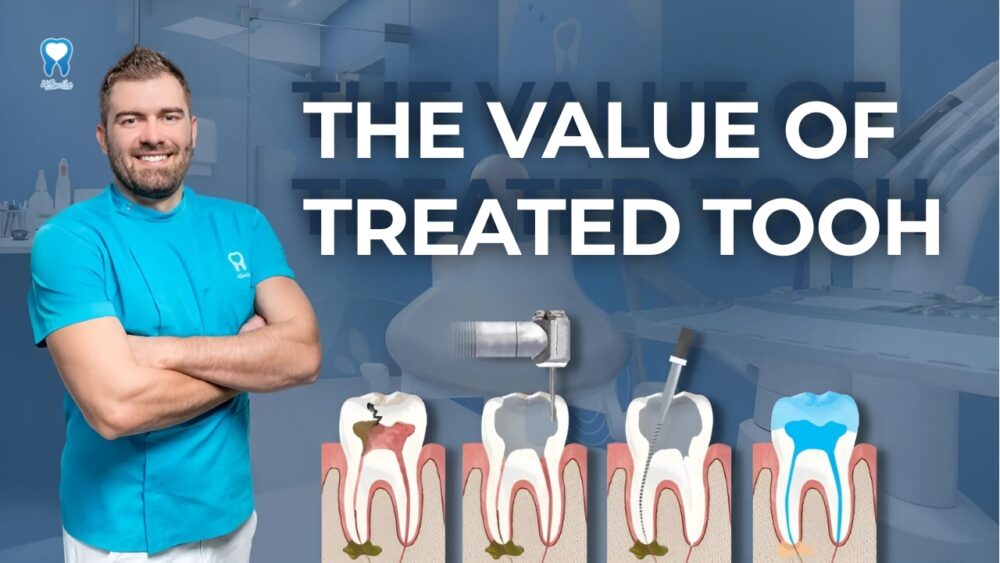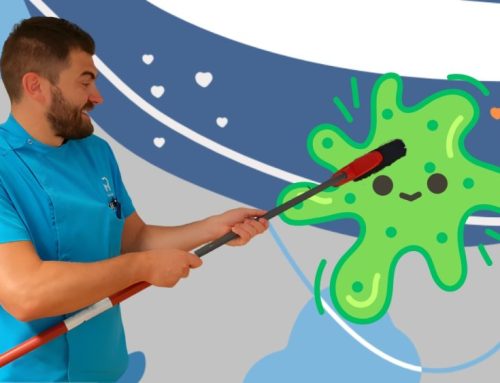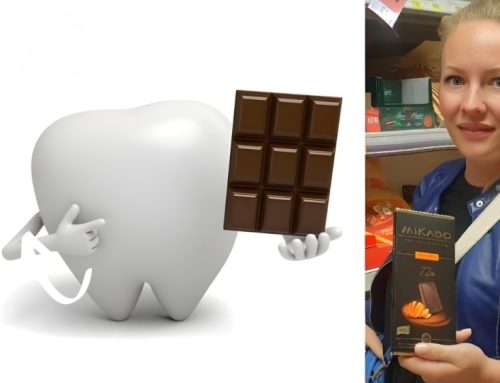How long can a treated tooth last and is it dangerous to live with a tooth without pulp?
Given the abundance of various articles online related to dental health, patients often find it difficult to determine the credibility of the claims they come across.
It’s well known that “googling” for medical advice is not always advisable precisely because one can come across different forms of propaganda that are not truly health-related but instead focused solely on selling.
One such myth is the so-called “dead tooth.”
In this week’s blog from Dental Center 4Smile, find out:
- What is a “dead tooth”?
- How can a tooth “die”?
- Is it wise to save a “dead tooth” and keep it?
- How long can a treated tooth last?
- What factors can affect the longevity of a treated tooth?
- Is it dangerous to live with a tooth without pulp?
- What are the false propagandas surrounding treated teeth?
What is a “dead tooth”?
A dead tooth is one that no longer receives blood supply. All tissues and bones in your body need blood to continue functioning.
If the blood circulation to the tooth is cut off, it dies.
How can a tooth “die”?
There are several reasons a tooth can lose access to blood. A common reason is the development of a bacterial infection in the tooth that is not treated in time.
Caries (cavity) is a typical oral health issue. A composite filling is generally all that’s needed to stop decay and prevent the tooth from dying. However, if treatment is delayed and bacteria are allowed to reach the center of the tooth, the decay eventually affects the pulp. The infection and inflammation will block the blood flow to the tooth, causing it to start dying.
Another reason a tooth can “die” is if a person experiences significant facial trauma. A blow to the face during sports, for example, can sever the tooth’s blood vessels. Even though the tooth can sometimes be saved afterward, often the tooth simply dies after the impact.
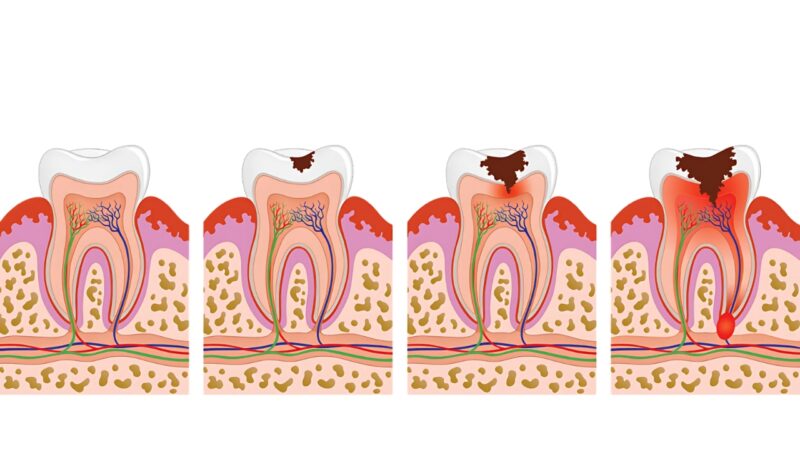
Is it wise to save a “dead tooth” and keep it?
Contrary to some marketing propaganda, it is always advisable to try to save the tooth.
Modern dentistry uses advanced equipment and high-quality biocompatible materials that allow for effective treatment.
If the tooth is not fractured at the root and the infection hasn’t destroyed too much bone, there’s often a possibility to save the “dead tooth.”
At Dental Center 4Smile, in Europe, Croatia, dentists Ivan Antolković and Mia Radić use only mechanical endodontics for root canal treatment.
Dr. Ivan Antolković removes the pulp and cleans, reshapes, and sterilizes the root canals. The periodontal ligament keeps the tooth in place even though it no longer contains living pulp tissue, ensuring it can continue functioning like the rest of your teeth after pulp removal.
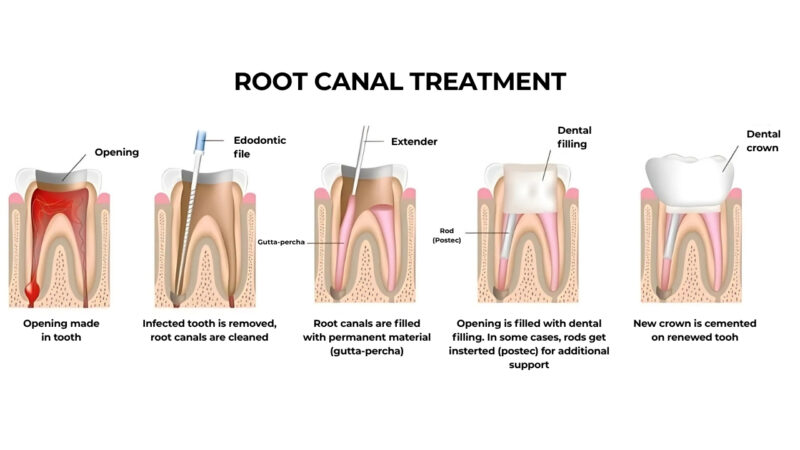
How long can a treated tooth last?
By removing the nerve and pulp from an infected tooth, and then cleaning and disinfecting it, pain is eliminated, the tooth is saved, and overall oral health is restored.
The success rate of root canal treatment is quite high.
The lifespan of a tooth with a treated root canal cannot be predicted with a specific number.
Root canal therapy is often the last resort to save a tooth damaged by decay or trauma.
A tooth with a treated root canal usually continues to function normally for many years after the procedure.
Even after treatment, the tooth can last a lifetime.
However, while treated root canals can last a lifetime, there are some situations where your tooth may require further treatment.
Read on to learn what factors can affect the longevity of a treated tooth.
What can affect the longevity of a treated tooth?
- Initial condition of infection and decay
If the tooth is saved at the last possible moment, its longevity may be questionable despite the treatment. Some endodontic infections cause such significant bone loss that the tooth cannot be saved long-term. The tooth becomes less stable due to reduced bone support. - Tooth location
Depending on their location, teeth have different functions. The main role of front teeth, which have one root, is to tear and cut food.
Back teeth, designed for chewing, are built to withstand the strong forces generated during eating.
When tooth structure is lost, so is its strength and ability to withstand chewing forces.
That’s why Dr. Antolković often recommends reinforcing treated teeth with a composite build-up and a ceramic dental crown.
With proper oral care, this ensures the treated tooth’s longevity. - Oral hygiene and regular dental check-ups
A tooth may be excellently treated, saved, reinforced with a composite build-up, and protected by a ceramic crown, but if you don’t maintain good oral health at home and professionally, there’s no guarantee for the longevity of your smile.
That’s why it’s important to focus on oral hygiene and schedule regular check-ups with your dentist in Zagreb to prevent issues rather than treat them!
Is it dangerous to live with a tooth without pulp?
As mentioned earlier, during treatment, Dr. Ivan Antolković removes the pulp and cleans, reshapes, and sterilizes the root canals.
The tooth is then reinforced with a composite build-up and covered with a ceramic crown.
The treated tooth becomes sterile, strong, and aesthetically pleasing.
A properly treated tooth does not have a negative impact on the rest of the body.
It can potentially last for years, decades, or even a lifetime.
What are the false propagandas surrounding treated teeth?
The biggest myth about treated teeth is calling them “dead teeth” and promoting the idea that you shouldn’t live with a “dead part of your body.”
This propaganda often supports tooth extraction to sell dental implants.
Yes, it is dangerous to live with a dead tooth that hasn’t been treated. In that case, bacteria can spread throughout the body.
But a treated tooth is sterile and safe for the rest of the body.
Dr. Ivan Antolković and the team at Dental Center 4Smile firmly believe in trying to save and treat what can be saved before moving on to prosthetic replacements.
